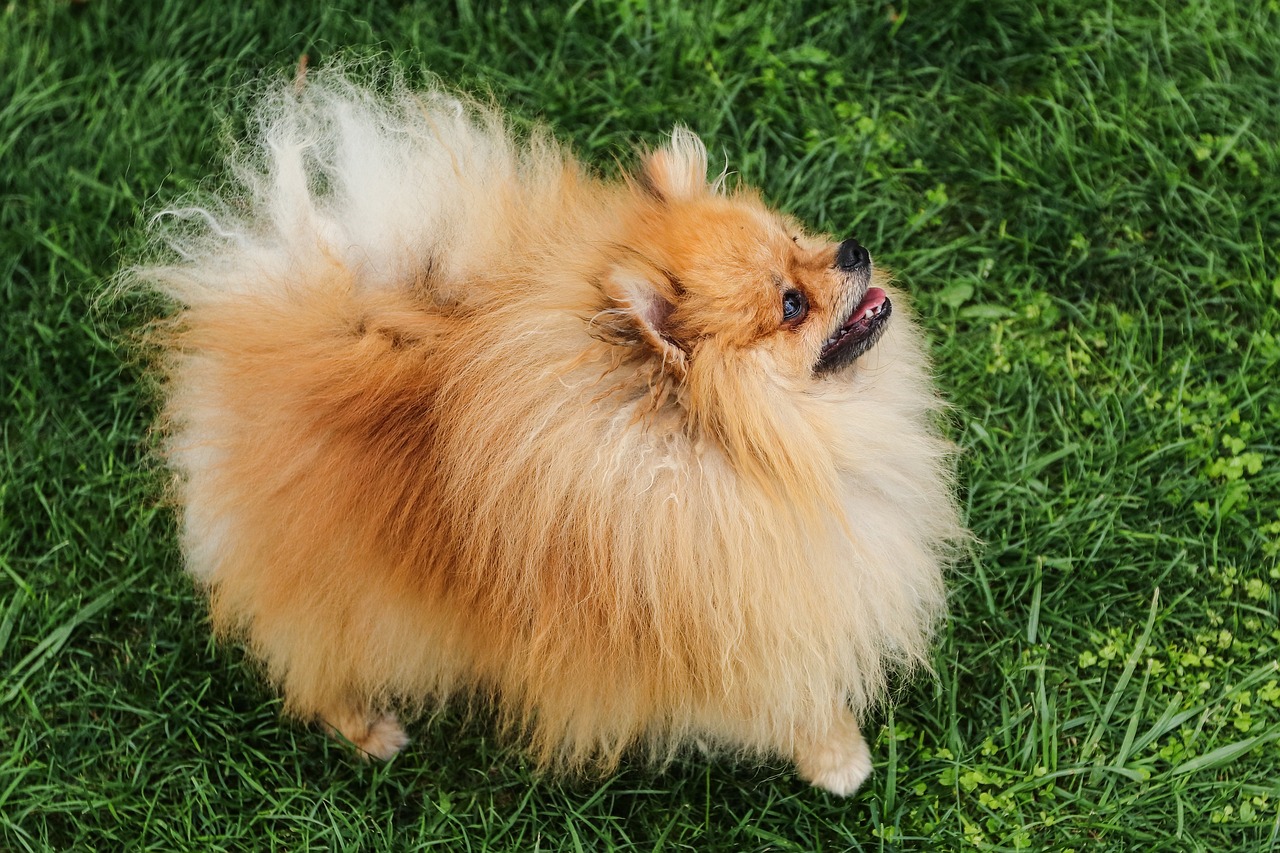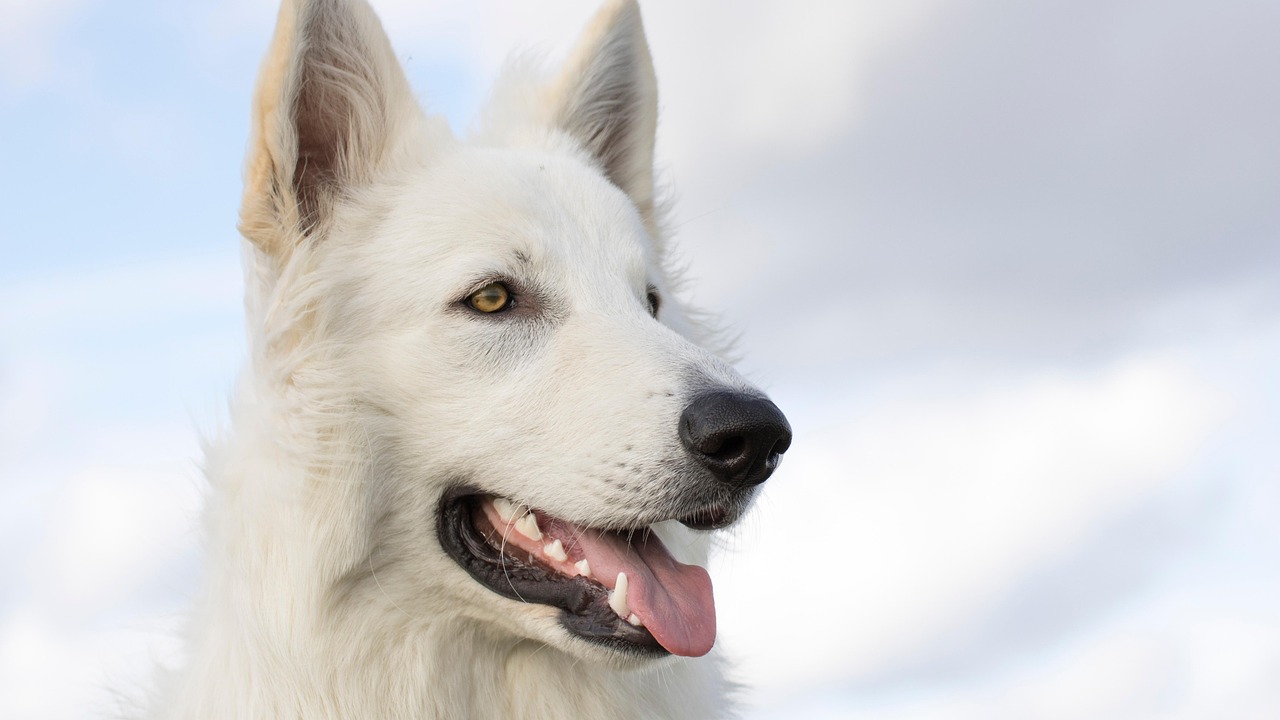This article provides a comprehensive overview of black fly bites on dogs, including symptoms, treatment options, and preventive measures to ensure your pet’s health and comfort.
Understanding Black Flies and Their Habitat
Black flies are small biting insects commonly found near rivers and streams. These pests thrive in moist environments, making areas with standing water or flowing streams prime locations for their breeding. Awareness of their habitat is essential for dog owners to identify potential risks and implement preventive measures.
Symptoms of Black Fly Bites on Dogs
Recognizing the symptoms of black fly bites is crucial for timely treatment. Common signs include:
- Swelling
- Redness
- Itching
If left untreated, these symptoms can lead to more serious health issues.
Immediate Reactions to Black Fly Bites
Dogs may exhibit immediate reactions such as scratching or licking the affected area, indicating discomfort. Observing these behaviors can help owners respond quickly to their pet’s needs.
Localized Swelling and Redness
Localized swelling and redness around the bite site are common symptoms. This inflammation can cause significant discomfort and may require veterinary attention if it worsens.
Systemic Reactions in Sensitive Dogs
Some dogs may have systemic reactions, including hives or difficulty breathing. Recognizing these severe symptoms is essential for ensuring prompt medical intervention.
Treatment Options for Black Fly Bites
Effective treatment options are available for dogs suffering from black fly bites. These can range from home remedies to veterinary treatments, depending on the severity of the reaction.
Home Remedies for Mild Reactions
For mild reactions, home remedies such as cold compresses, oatmeal baths, and anti-itch creams can provide relief. These methods are often effective in soothing irritated skin.
Veterinary Treatments for Severe Cases
In cases of severe reactions, veterinary treatments may include antihistamines, corticosteroids, or antibiotics. Consulting a veterinarian ensures that your dog receives appropriate care tailored to their needs.
Preventing Black Fly Bites in Dogs
Preventive measures are crucial for protecting dogs from black fly bites. Implementing strategies can significantly reduce the risk of bites and associated health issues.
Avoiding High-Risk Areas
Keeping dogs away from areas where black flies breed, such as near rivers and streams, can minimize exposure. Awareness of these locations is essential for dog owners.
Using Protective Gear and Repellents
Utilizing protective gear, such as dog-friendly insect repellents and protective clothing, can help shield pets from bites. Choosing safe products is vital for effective prevention.
When to Seek Veterinary Care
Knowing when to seek veterinary care is important for dog owners. Certain symptoms and reactions warrant professional attention to ensure the health and safety of your pet.
Signs of Infection or Allergic Reaction
If a dog shows signs of infection, such as pus or increased swelling, or exhibits symptoms of an allergic reaction, immediate veterinary care is necessary to prevent complications.
Follow-Up Care After Treatment
After treatment, follow-up care may include monitoring the bite site and ensuring that the dog does not develop further complications. Regular check-ups can help maintain your dog’s health.
Conclusion: Keeping Your Dog Safe from Black Fly Bites
By understanding the symptoms, treatment options, and preventive measures regarding black fly bites, dog owners can effectively protect their pets from these pesky insects and ensure their well-being.

Understanding Black Flies and Their Habitat
Black flies, often referred to as buffalo gnats, are small biting insects that thrive in specific environments, primarily near fast-flowing water sources like rivers and streams. Their presence can pose a risk not only to humans but also to our beloved pets, particularly dogs. Understanding the habitat and behavior of these insects is essential for dog owners to effectively protect their furry companions.
These insects typically breed in clean, oxygen-rich waters, making areas near rivers, streams, and waterfalls prime locations for their populations. During the warmer months, especially in spring and early summer, black flies become increasingly active, coinciding with their mating and feeding cycles.
- Habitat Characteristics:
- Clean, flowing water bodies
- Vegetation along riverbanks that provides shelter
- Warm temperatures, which promote breeding
- Feeding Behavior:
- Females require blood meals for egg production
- Males primarily feed on nectar and plant juices
Dog owners should be particularly vigilant in areas where black flies are known to breed. Recognizing the signs of a black fly infestation can help in taking preventive measures. For instance, if you notice your dog showing signs of discomfort after being near a water source, it may be due to black fly bites.
To protect your pets, consider keeping them away from areas where black flies are prevalent, especially during peak activity times. Additionally, using insect repellents formulated for pets can provide an extra layer of protection against these pesky insects.
In conclusion, understanding the habitat and behavior of black flies is crucial for dog owners. By being aware of where these insects thrive and taking appropriate precautions, you can help ensure the safety and comfort of your pets.
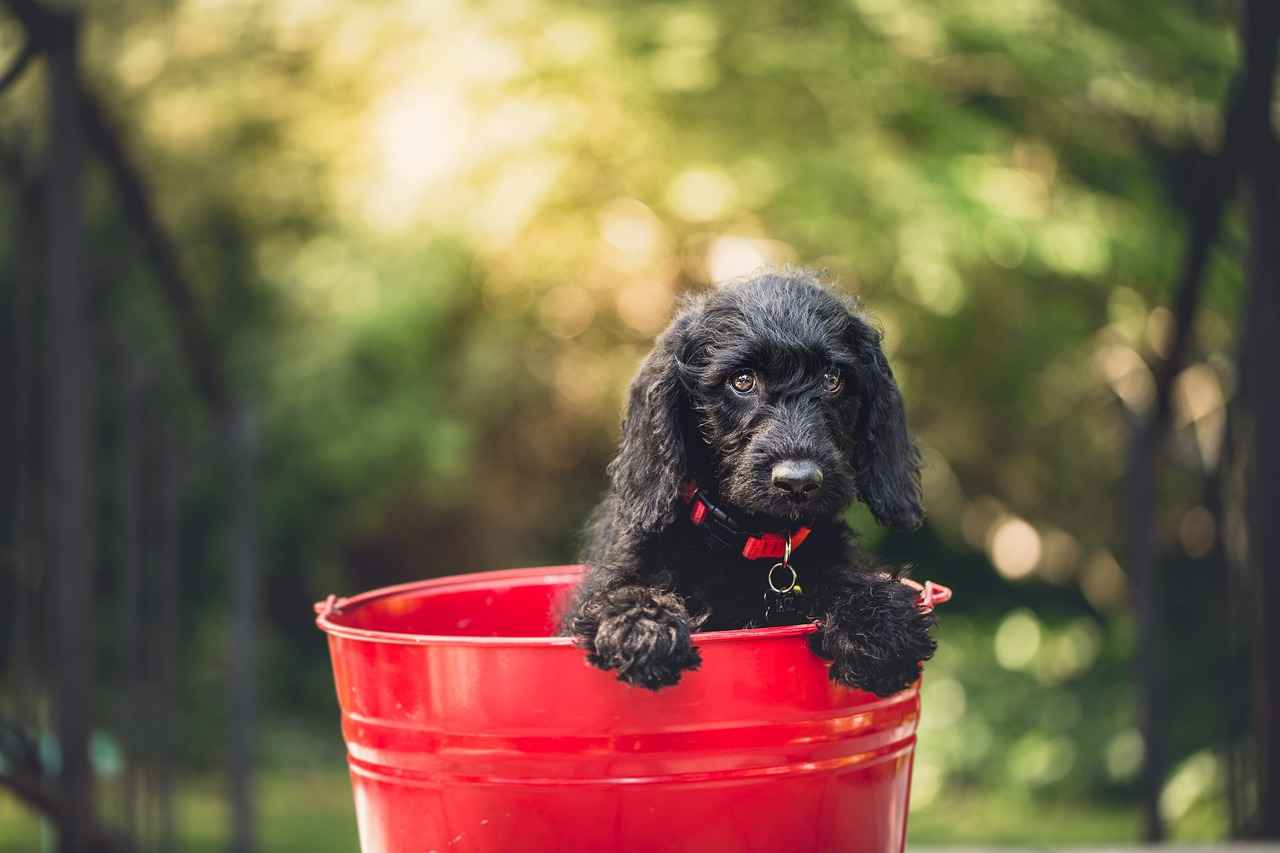
Symptoms of Black Fly Bites on Dogs
Recognizing the symptoms of black fly bites is essential for ensuring your dog’s health and comfort. Black flies are notorious for their painful bites, which can lead to various reactions in dogs. Understanding these symptoms allows pet owners to take prompt action, minimizing discomfort and preventing further complications.
- Swelling and Redness: After a black fly bite, you may notice localized swelling and redness around the bite area. This inflammation is a natural response to the insect’s saliva and can cause significant discomfort for your pet.
- Itching and Scratching: Dogs often respond to bites with itching and scratching. If you observe your dog frequently licking or scratching the affected area, it is a clear indication of irritation and discomfort.
- Behavioral Changes: Changes in behavior can also signal that your dog is experiencing discomfort. Watch for signs of distress, such as whining, restlessness, or reluctance to engage in normal activities.
- Systemic Reactions: In some cases, dogs may develop more severe reactions, such as hives or even difficulty breathing. These systemic symptoms require immediate veterinary attention to prevent serious health issues.
It is vital for dog owners to monitor their pets closely after exposure to black flies. If you notice any of these symptoms, especially severe reactions, consult your veterinarian promptly. Early intervention can help alleviate discomfort and prevent complications.
In conclusion, being aware of the symptoms of black fly bites can significantly enhance your ability to care for your dog effectively. By recognizing these signs early, you can ensure your pet receives the appropriate treatment and care, promoting a swift recovery.
Immediate Reactions to Black Fly Bites
When dogs encounter black fly bites, their immediate reactions can be quite telling. Scratching or licking the affected area is a common behavior that signifies discomfort. These actions are not only instinctual but also serve as a way for dogs to alleviate the irritation they feel from the bites. As a responsible pet owner, it is crucial to observe these behaviors closely, as they can guide you in addressing your pet’s needs promptly.
In addition to scratching and licking, you may notice your dog displaying signs of anxiety or restlessness. This restlessness can manifest as pacing or an inability to settle down, which often indicates that the bite is causing significant discomfort. It’s essential to monitor your dog for these signs, as they can help you determine the severity of the situation and whether further action is needed.
Another immediate reaction can be whining or barking, which may occur as your dog attempts to communicate its distress. If your dog is vocalizing more than usual, it could be a sign that they are in pain or discomfort. In such cases, providing comfort and assessing the bite area for swelling or redness is advisable.
Should these immediate reactions persist or worsen, it is vital to consult a veterinarian. They can offer guidance on appropriate treatments to alleviate your dog’s discomfort and prevent potential complications. Taking these signs seriously ensures that your furry friend receives the care they need in a timely manner.
By being attentive to your dog’s immediate reactions to black fly bites, you can play a proactive role in their health and well-being. Early intervention can make a significant difference in your pet’s recovery and comfort.
Localized Swelling and Redness
around the bite site are common symptoms that may arise after a dog is bitten by a black fly. These symptoms typically indicate an inflammatory response, which is the body’s natural reaction to injury or irritation. The affected area may appear raised and warm to the touch, often accompanied by itching and discomfort. It is essential for dog owners to monitor these symptoms closely, as they can escalate if not addressed promptly.
In many cases, the localized swelling and redness can lead to significant discomfort for your pet. Dogs may react by excessively licking or scratching the affected area, which can exacerbate the inflammation and potentially lead to secondary infections. If you notice that the swelling is increasing or if your dog seems to be in pain, it is advisable to seek veterinary attention as soon as possible.
Veterinarians may recommend treatments that range from topical ointments to oral medications, depending on the severity of the reaction. In some instances, antihistamines or corticosteroids may be prescribed to alleviate swelling and itching. Additionally, keeping the bite area clean and preventing your dog from further irritating it can aid in the healing process.
It is also important to note that while localized reactions are common, some dogs may experience more severe systemic reactions, which can include symptoms such as hives or difficulty breathing. Recognizing these signs is vital, as they require immediate medical intervention.
To conclude, while localized swelling and redness are common after black fly bites, proper monitoring and timely veterinary care can help mitigate discomfort and prevent complications. Always consult with a veterinarian if you have concerns about your dog’s health following a bite.
Systemic Reactions in Sensitive Dogs
can be a serious concern for pet owners, particularly when it comes to black fly bites. While many dogs may only experience mild symptoms, such as localized swelling and itching, some may have more severe reactions that require immediate attention.
Systemic reactions are not just limited to the bite site; they can affect the entire body. Hives, also known as urticaria, are a common reaction characterized by raised, itchy welts on the skin. These can appear suddenly and may be accompanied by difficulty breathing, which is a sign of a more serious allergic reaction known as anaphylaxis. Recognizing these symptoms early is crucial for ensuring prompt medical intervention.
Here are some key points to consider regarding systemic reactions in dogs:
- Symptoms to Watch For: Apart from hives and breathing difficulties, other symptoms may include vomiting, diarrhea, and excessive drooling. If any of these symptoms are observed, it is imperative to seek veterinary care immediately.
- Risk Factors: Certain breeds may be more prone to severe allergic reactions. Dogs with a history of allergies or previous reactions to insect bites should be monitored closely.
- Emergency Response: If a dog shows signs of a systemic reaction, it is essential to remain calm and act quickly. Administering an antihistamine may help, but always consult with a veterinarian for the best course of action.
Understanding and recognizing the signs of systemic reactions can be life-saving. Pet owners should always be vigilant, especially during peak black fly seasons, and take proactive measures to protect their dogs from bites.
In conclusion, while black fly bites may seem like a minor issue, the potential for systemic reactions in sensitive dogs makes it essential for owners to be informed and prepared. Regular veterinary check-ups and awareness of your dog’s health can significantly mitigate risks associated with insect bites.
Long-Term Effects of Black Fly Bites
Black fly bites can pose significant risks to your dog’s health, particularly if not addressed promptly. While many dogs may only experience mild reactions, it is crucial for pet owners to be aware of the potential for long-term health issues that can arise from these bites.
In some instances, black fly bites can lead to secondary infections. The initial bite can cause a break in the skin, making it easier for bacteria to enter. If a dog scratches or licks the area excessively, it can exacerbate the situation, leading to more severe infections that may require veterinary intervention.
Moreover, allergic reactions are another serious concern. Some dogs may develop a hypersensitive response to the saliva of black flies, resulting in chronic itching, hives, or even anaphylaxis in extreme cases. Recognizing the signs of these reactions early on is crucial for effective treatment.
It is essential for dog owners to monitor their pets closely after a black fly bite. Symptoms such as persistent swelling, redness, or discharge from the bite site should prompt immediate veterinary consultation. Additionally, long-term effects can include behavioral changes due to discomfort or pain, which can affect the dog’s overall quality of life.
Preventive measures are vital in safeguarding your pet against these risks. Keeping your dog away from known black fly habitats, using appropriate insect repellents, and maintaining a healthy skin barrier can significantly reduce the likelihood of bites and subsequent complications.
In conclusion, understanding the long-term effects of black fly bites is essential for ongoing pet care. By staying informed and vigilant, dog owners can help ensure their pets remain healthy and comfortable.
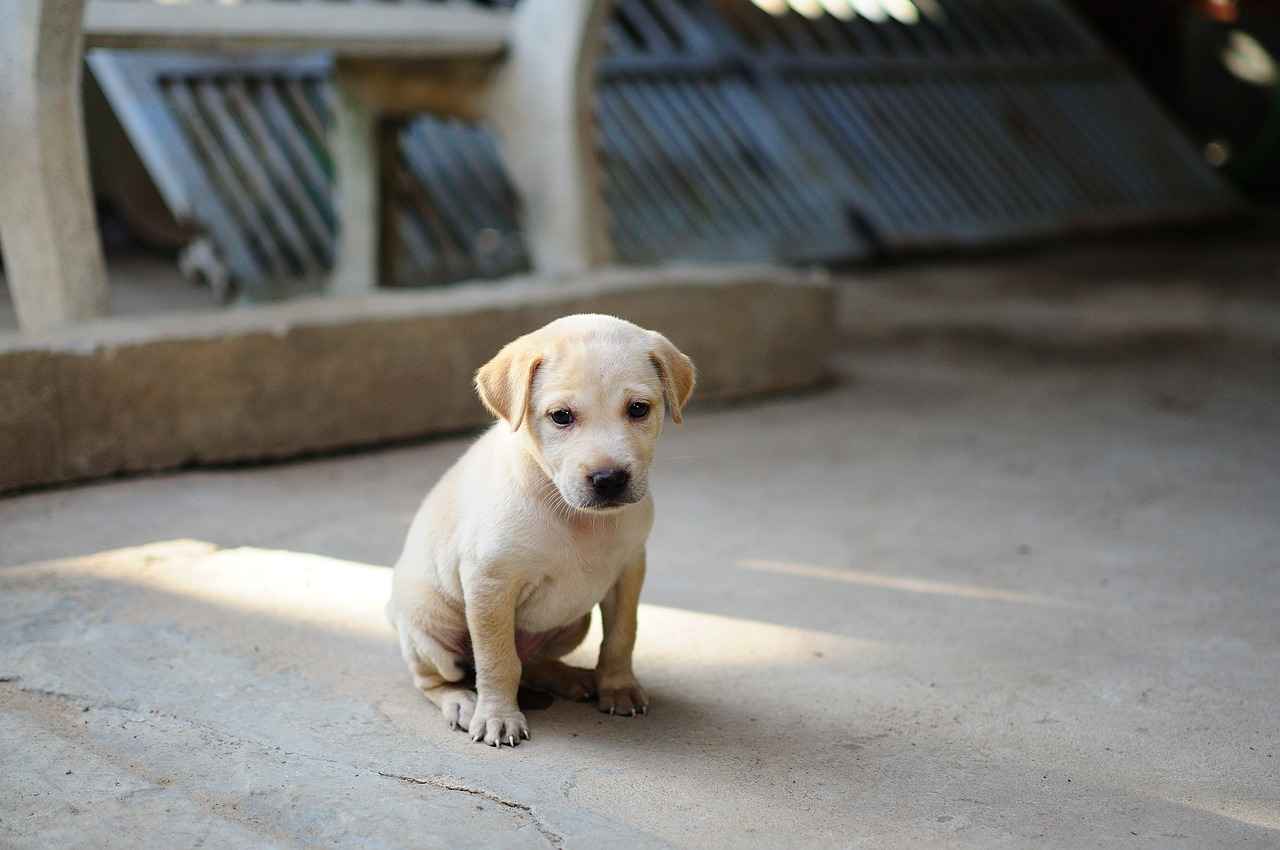
Treatment Options for Black Fly Bites
When it comes to dealing with black fly bites on dogs, it is crucial for pet owners to understand that effective treatment options are available. The response to these bites can vary significantly based on the severity of the reaction, and treatment can range from simple home remedies to more advanced veterinary care.
Home Remedies for Mild Reactions
For dogs experiencing mild reactions to black fly bites, several home remedies can provide relief:
- Cold Compresses: Applying a cold compress to the affected area can help reduce swelling and soothe itching.
- Oatmeal Baths: Giving your dog an oatmeal bath can alleviate irritation and provide comfort to their skin.
- Anti-Itch Creams: Over-the-counter creams designed for pets can help manage discomfort and itching.
Veterinary Treatments for Severe Cases
If your dog exhibits severe reactions, such as extensive swelling or signs of an allergic response, it is essential to consult a veterinarian. Possible veterinary treatments include:
- Antihistamines: These can help control allergic reactions and provide relief from itching.
- Corticosteroids: In more severe cases, corticosteroids may be prescribed to reduce inflammation and swelling.
- Antibiotics: If there is a risk of infection due to scratching, antibiotics may be necessary.
Importance of Timely Treatment
Recognizing the symptoms early and initiating treatment promptly is essential for your dog’s well-being. Left untreated, black fly bites can lead to complications such as secondary infections or chronic skin issues. Always consult your veterinarian if you are unsure about the severity of your dog’s reaction.
Conclusion
In summary, while black fly bites can be uncomfortable for dogs, there are numerous treatment options available. From home remedies for mild cases to veterinary interventions for severe reactions, taking proactive measures can help ensure your pet’s health and comfort.
Home Remedies for Mild Reactions
When your dog experiences mild reactions from black fly bites, there are several effective home remedies that can help alleviate discomfort and promote healing. These remedies are not only easy to apply but also utilize common household items that are safe for your pet.
- Cold Compresses: Applying a cold compress to the affected area can help reduce swelling and soothe the skin. Wrap ice in a clean cloth or use a cold pack, and hold it against the bite site for 10-15 minutes.
- Oatmeal Baths: An oatmeal bath is a natural way to relieve itching and irritation. Simply grind plain oatmeal into a fine powder and add it to your dog’s bathwater. Let your dog soak for about 15 minutes to enjoy the soothing effects.
- Anti-Itch Creams: Over-the-counter anti-itch creams specifically designed for pets can provide quick relief. Look for products containing ingredients like hydrocortisone or aloe vera, but always consult your veterinarian before applying any new treatment.
- Natural Remedies: Some pet owners find that natural remedies, such as coconut oil or apple cider vinegar, can help. Coconut oil has moisturizing properties and can reduce inflammation, while diluted apple cider vinegar may help with itching.
In addition to these remedies, it’s essential to monitor your dog’s behavior after treatment. If symptoms persist or worsen, consult your veterinarian for further advice. Early intervention can prevent more severe reactions and ensure your pet remains comfortable.
By utilizing these home remedies, you can provide your dog with the relief they need from mild black fly bite reactions, allowing them to return to their playful self in no time.
Veterinary Treatments for Severe Cases
When it comes to black fly bites on dogs, some reactions can escalate into severe cases requiring immediate veterinary intervention. It’s important for dog owners to recognize the signs of severe reactions and understand the treatment options available to ensure their pets receive the best care possible.
In instances where dogs exhibit severe symptoms such as extensive swelling, hives, or difficulty breathing, prompt veterinary treatment is essential. These symptoms may indicate an allergic reaction or anaphylaxis, which can be life-threatening if not addressed swiftly. Veterinary treatments often include:
- Antihistamines: These medications can help alleviate allergic symptoms by blocking the effects of histamine, a substance released during allergic reactions. Common antihistamines prescribed for dogs include diphenhydramine and cetirizine.
- Corticosteroids: In cases of severe inflammation or allergic reactions, corticosteroids may be administered to reduce swelling and suppress the immune response. These medications can provide rapid relief from symptoms.
- Antibiotics: If the bite site becomes infected, your veterinarian may prescribe antibiotics to combat bacterial infections. This is particularly important if there are signs of pus, increased redness, or warmth around the bite area.
Consulting a veterinarian ensures that your dog receives appropriate care tailored to their needs. The vet will conduct a thorough examination and may recommend additional treatments such as fluid therapy to maintain hydration or epinephrine for severe allergic reactions.
Follow-up care is equally important. After initial treatment, monitoring your dog for any recurring symptoms or complications is crucial. Regular veterinary check-ups can help ensure your dog’s long-term health and well-being.
By being proactive and informed about the potential severity of black fly bites, dog owners can take the necessary steps to protect their pets and respond effectively in emergencies.
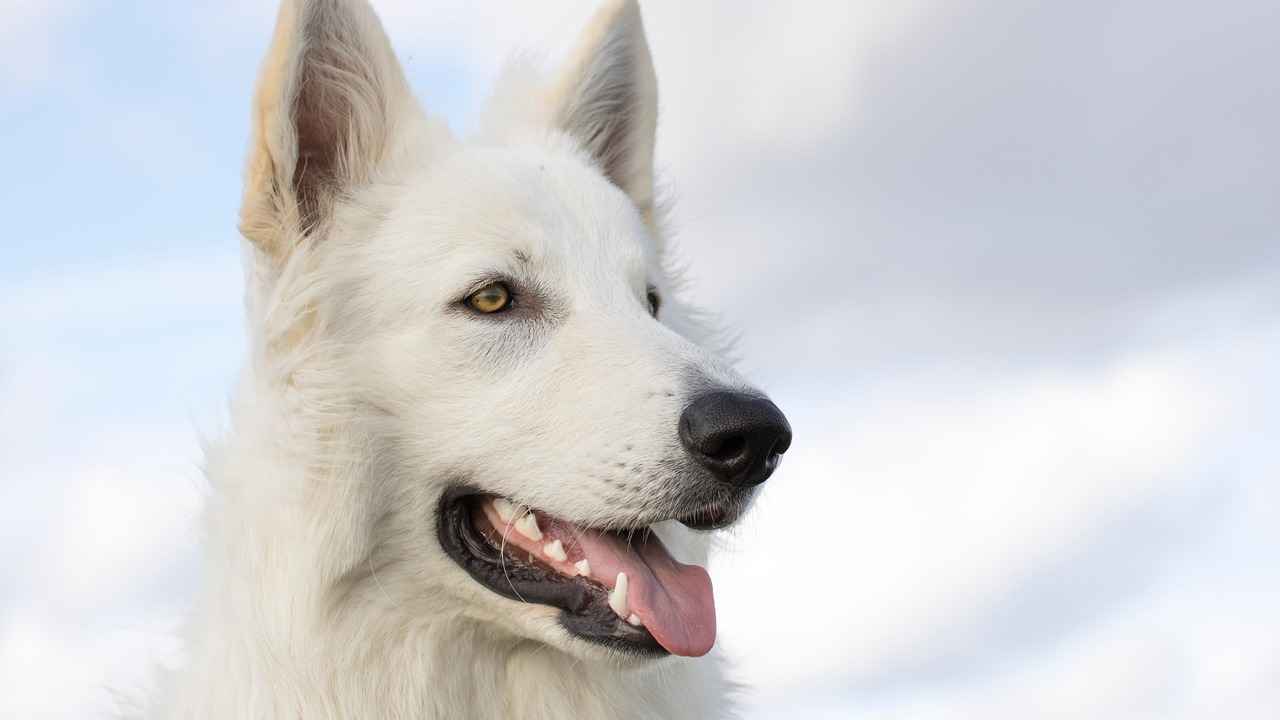
Preventing Black Fly Bites in Dogs
Preventive measures are essential for safeguarding dogs from the discomfort and potential health risks associated with black fly bites. These pesky insects are not only irritating but can also lead to serious health complications if bites are left untreated. By implementing effective strategies, dog owners can significantly reduce the risk of bites and the health issues that may arise from them.
One of the most effective ways to prevent black fly bites is to avoid high-risk areas. Black flies thrive near water bodies such as rivers, streams, and lakes. Keeping your dog away from these environments, especially during peak black fly seasons, can greatly minimize exposure. Always be aware of the surroundings when taking your dog out for walks or playtime.
Another important preventive measure is the use of protective gear. Dog-friendly insect repellents can be highly effective in creating a barrier against these biting insects. When choosing repellents, ensure they are safe for pets and specifically designed for canine use. Additionally, consider using protective clothing, such as lightweight dog vests, which can further shield your pet from bites while allowing them to enjoy outdoor activities.
Regular grooming can also play a crucial role in prevention. Keeping your dog’s coat clean and well-groomed reduces the likelihood of insect bites. Regularly check for signs of irritation or bites, especially after outdoor excursions. If you notice any signs of discomfort, such as excessive scratching or licking, it’s advisable to consult your veterinarian promptly.
In summary, implementing these preventive measures can significantly protect your dog from the nuisance and health risks associated with black fly bites. By being proactive and informed, you can ensure your furry friend remains comfortable and healthy.
Avoiding High-Risk Areas
As a responsible dog owner, it is crucial to understand the importance of avoiding high-risk areas where black flies are known to breed. These insects thrive in environments that are often found near rivers, streams, and other bodies of water. By being aware of these locations, you can effectively minimize your dog’s exposure to potential bites and the associated health risks.
Black flies are attracted to stagnant water and areas with dense vegetation, making it essential to keep your furry friend away from these hotspots, especially during the warmer months when black flies are most active. Here are some practical tips for dog owners:
- Identify High-Risk Locations: Familiarize yourself with local parks, hiking trails, and natural reserves that are near water sources. Avoid these areas during peak fly season.
- Plan Your Walks: Opt for walks in open areas away from water bodies. This not only protects your dog from black flies but also provides a safer environment for exercise.
- Monitor Weather Conditions: Black flies are more prevalent during warm, humid days. Plan outdoor activities accordingly to reduce the risk of bites.
- Stay Informed: Keep yourself updated on local pest reports that indicate increased black fly activity in your area.
By implementing these strategies, you can significantly reduce the chances of your dog encountering black flies. Remember, awareness and preparation are your best tools in keeping your pet safe and comfortable.
In conclusion, avoiding high-risk areas is an essential preventive measure that every dog owner should take seriously. By being proactive, you can ensure your dog’s health and well-being, allowing them to enjoy the great outdoors without the threat of pesky black flies.
Using Protective Gear and Repellents
When it comes to safeguarding your beloved pets from the dangers of black fly bites, utilizing protective gear is essential. Black flies can pose significant health risks to dogs, making it crucial for pet owners to take proactive measures. One of the most effective strategies is to equip your dog with dog-friendly insect repellents and protective clothing.
Insect Repellents
- Choose natural repellents that are specifically formulated for pets to avoid harmful chemicals.
- Look for products containing ingredients like citronella or lemongrass, which are effective yet safe.
- Always test a small area of your dog’s skin first to check for any adverse reactions before full application.
Protective Clothing
- Consider using lightweight, breathable fabrics that cover your dog’s skin, especially during peak black fly activity.
- Look for designs that allow for ease of movement while providing adequate coverage.
- Don’t forget to ensure that any clothing fits your dog properly to avoid discomfort.
In addition to using protective gear, it is vital to choose safe products for effective prevention. Always consult with your veterinarian to confirm that the products you select are suitable for your dog’s breed, age, and health condition. This step is crucial in ensuring that your efforts to protect your pet are both effective and safe.
By implementing these preventive measures, you can significantly reduce the risk of black fly bites, ensuring your pet remains healthy and comfortable. Remember, a little preparation goes a long way in keeping your furry friend safe from pesky insects.
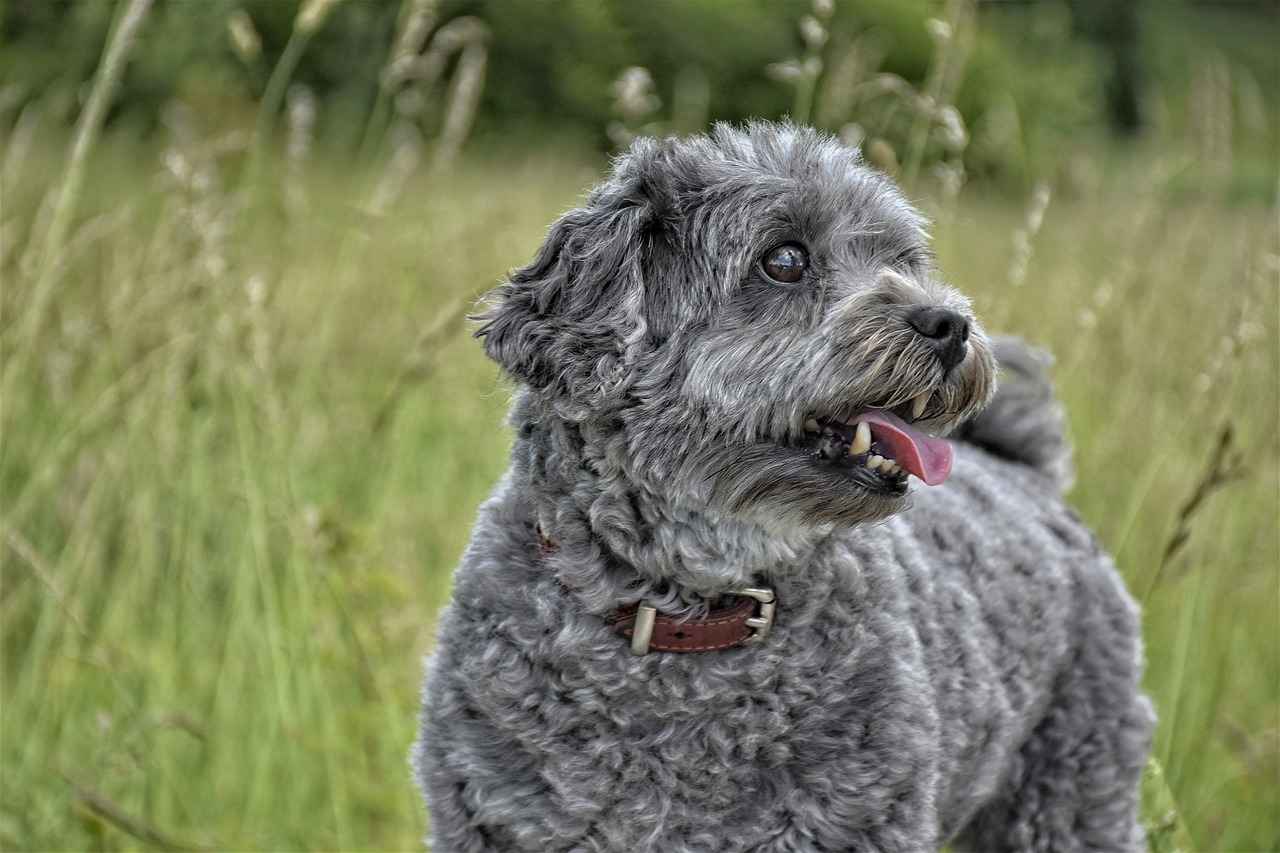
When to Seek Veterinary Care
is a critical consideration for every dog owner. Understanding the signs that indicate a need for professional help can make a significant difference in your pet’s health and well-being. This article will outline the key symptoms and situations that warrant immediate veterinary attention, ensuring your furry friend stays safe and healthy.
As a responsible pet owner, it is essential to recognize when your dog is in distress. Certain symptoms may appear mild initially but can escalate quickly if not addressed. For instance, if your dog is experiencing persistent vomiting or diarrhea, it could lead to dehydration, a serious condition that requires prompt treatment.
- Severe Allergic Reactions: If your dog shows signs of an allergic reaction, such as swelling of the face, difficulty breathing, or hives, seek veterinary care immediately. These reactions can be life-threatening.
- Signs of Pain: If your dog is whining, limping, or showing signs of discomfort when touched, it may indicate an underlying issue that needs professional evaluation.
- Changes in Behavior: Sudden changes in your dog’s behavior, such as lethargy or aggression, can signal health problems that require veterinary attention.
In addition, monitoring your dog’s eating and drinking habits is crucial. If your dog refuses food or water for more than 24 hours, it is essential to consult a veterinarian. This could be a sign of a more serious condition that needs to be addressed.
Furthermore, any signs of infection, such as pus, fever, or increased swelling at a bite site, should prompt an immediate visit to the veterinarian. Early intervention can prevent complications and ensure a quicker recovery.
In conclusion, being vigilant and informed about your dog’s health can help you determine when to seek veterinary care. By recognizing the signs and symptoms outlined above, you can ensure that your beloved pet receives the necessary attention and care they need to thrive.
Signs of Infection or Allergic Reaction
When caring for your dog, it is essential to be vigilant about any changes in their health, particularly after exposure to potential irritants like black fly bites. If you notice that your dog is showing signs of infection, such as pus, increased swelling, or any unusual discharge, it is critical to seek immediate veterinary care. These symptoms may indicate a secondary infection that could lead to more severe health issues if not addressed promptly.
Additionally, dogs can exhibit symptoms of an allergic reaction in response to bites. Common signs include:
- Excessive scratching or licking of the affected area
- Hives or raised welts on the skin
- Swelling of the face, ears, or paws
- Difficulty breathing or wheezing
- Vomiting or diarrhea
If your dog displays any of these symptoms, it is crucial to act quickly. Allergic reactions can escalate rapidly and may require emergency medical intervention. Your veterinarian may recommend treatments such as antihistamines or corticosteroids to alleviate symptoms and prevent further complications.
In summary, being aware of the signs of infection and allergic reactions in dogs is vital for their health and well-being. Regular monitoring and prompt veterinary care can help ensure that your furry friend remains safe and comfortable.
Follow-Up Care After Treatment
After your dog has received treatment for black fly bites, follow-up care is essential to ensure a smooth recovery. This phase involves several important steps that every pet owner should take to monitor their dog’s health and prevent any potential complications.
- Monitoring the Bite Site: Regularly check the affected area for signs of infection, such as increased redness, swelling, or discharge. If any of these symptoms occur, it’s crucial to consult your veterinarian immediately.
- Preventing Scratching: Dogs may be inclined to scratch or lick the bite site, which can exacerbate the condition. Consider using an Elizabethan collar or other protective gear to prevent further irritation.
- Administering Medications: Follow your veterinarian’s instructions regarding any prescribed medications, such as antihistamines or topical treatments. Ensure that you administer these consistently and monitor for any side effects.
- Regular Check-Ups: Schedule follow-up appointments with your veterinarian to ensure that your dog is healing properly. These visits can help catch any issues early and provide peace of mind.
Additionally, it is important to observe your dog’s overall behavior and health during recovery. Look for any changes in appetite, energy levels, or behavior that may indicate discomfort or complications. If your dog seems unusually lethargic or exhibits signs of distress, do not hesitate to reach out to your veterinarian for advice.
In conclusion, diligent follow-up care after treatment for black fly bites is vital for your dog’s recovery. By closely monitoring the bite site and maintaining regular veterinary check-ups, you can help ensure your pet’s health and well-being.

Conclusion: Keeping Your Dog Safe from Black Fly Bites
In conclusion, ensuring the safety and well-being of your dog from black fly bites requires a proactive approach. By being aware of the symptoms associated with these bites, dog owners can quickly identify when their pets are in distress. Common symptoms such as swelling, redness, and itchiness should not be overlooked, as they can lead to more severe health issues if not addressed promptly.
When it comes to treatment, there are various options available. For mild reactions, home remedies like cold compresses and oatmeal baths can provide relief. However, for more serious reactions, it is crucial to consult a veterinarian who may recommend medications such as antihistamines or corticosteroids.
Prevention is key in protecting your dog from black fly bites. Avoiding areas where these insects thrive, particularly near rivers and streams, can significantly reduce the risk of exposure. Additionally, using dog-friendly insect repellents and protective clothing can serve as effective barriers against these pesky insects.
It is essential for dog owners to recognize when veterinary care is necessary. Signs of infection or severe allergic reactions require immediate attention to prevent complications. Following up on treatment and monitoring your dog’s condition ensures a swift recovery and continued health.
In summary, by understanding the symptoms, exploring appropriate treatment options, and implementing effective preventive measures, dog owners can safeguard their pets against the discomfort and health risks associated with black fly bites.
Frequently Asked Questions
- What are the common symptoms of black fly bites on dogs?
Common symptoms include swelling, redness, and itching around the bite area. If you notice your dog scratching or licking excessively, it might indicate discomfort from a black fly bite.
- How can I treat my dog’s black fly bites at home?
For mild reactions, try using cold compresses, oatmeal baths, or over-the-counter anti-itch creams. These remedies can help soothe irritated skin and provide relief.
- When should I seek veterinary care for my dog?
If your dog shows signs of an infection, like pus or increased swelling, or exhibits severe allergic reactions, such as hives or difficulty breathing, you should seek veterinary care immediately.
- What preventive measures can I take to protect my dog from black fly bites?
Keep your dog away from high-risk areas like rivers and streams, and consider using dog-friendly insect repellents or protective clothing to minimize the risk of bites.
- Can black fly bites lead to long-term health issues for my dog?
Yes, if left untreated, black fly bites can result in secondary infections or allergic reactions. It’s crucial to monitor your dog’s condition and seek treatment when necessary.

